Crank, bottom end design, friction and oiling
#31
... In discussing various crank designs there is still some cranks being used in Nascar that have 6 cwt, now I certainly can't talk about every Nascar engine builder, from what I have been able to discern is that some teams may run a 6 cwt crank on a road course and and run a 8 cwt on a oval, some for all I know will run a 6 cwt everywhere. It may however be a matter of cost or it could just be their opinion too.
#32
Addict
Rennlist Member
Rennlist Member
Thread Starter
I just got a quote in from an American based crankshaft manufacturer and I was a bit surprised at their pricing. Obviously not much use to us, one crank would be $25K price after that drops to around $12K each. So Winbergs are at $3.5K each for batch lots of 3 cranks, that is very reasonable if you want to save 20 pounds in weight.
Greg
Greg
#33
Rennlist Member
and you care about weight of crank, why????? 
moldex, is about $4k, and you get a stroker. its drilled right and lasts forever.
what else do you want. oh yeah, i forgot. everyone wants F1 to use our blocks.

moldex, is about $4k, and you get a stroker. its drilled right and lasts forever.
what else do you want. oh yeah, i forgot. everyone wants F1 to use our blocks.

I just got a quote in from an American based crankshaft manufacturer and I was a bit surprised at their pricing. Obviously not much use to us, one crank would be $25K price after that drops to around $12K each. So Winbergs are at $3.5K each for batch lots of 3 cranks, that is very reasonable if you want to save 20 pounds in weight.
Greg
Greg
#34
Addict
Rennlist Member
Rennlist Member
Thread Starter
Firstly don't confuse weight with strength, in fact it will be the opposite with the 928 block and of course some people may want to use more than 6,500 rpm. Using your philosophy, why would you want all that weight on the front end? Moving the weight balance rearwards has advantages.
#36
Archive Gatekeeper
Rennlist Member
Rennlist Member
Mine was $3200 two years ago, dunno what they are now.
#37
Team Owner
didnt Mark A have one for sale ( moldex)
#38
Addict
Rennlist Member
Rennlist Member
Thread Starter
The good thing about the use of smaller rod journals is that you can go a longer stroke. With a 6" rod you can achieve a 99 mm stroke and with conservatively sized pistons 103 mm bore you can get a 6.6 litre capacity. This is good for lower revving engines, like street engines.
Greg
Greg
#39
Addict
Rennlist Member
Rennlist Member
Thread Starter
Having time to think about this topic some more and reexamine the Winberg (now ornamental) crank and it appears that it on some journals uses a 3/4 grooved main bearing. Their was a reasonable amount of wear on some journals and we know that fully grooved bearings do not support loads as well as 180 degree bearings.
It was interesting to see that the main bearings that were drilled so that the oiling holes (2) they were 90 degrees apart were mains 2 and 4, the highest loaded. That doesn't make any sense as that journal would then require the 270 degree grooving thus supporting the crank less. That could also lead to increased deflection by the crank at those journals adding further to wear and losses.
A recent article in Race Tech Magazine dealt with crankshaft oiling options, also Micheal Mount successfully dealt with the oiling in a 968 engine when he ran it up to 8,500 rpm on the dyno. He had slightly revised the factory drillings. He also lowered oil pressure quite a lot also.
The article said that cross drilling was to be avoided, that is what we have in our factory cranks, it would be interesting to see what Michael did to sort the 968 crank as maybe it could be replicated in our cranks, even the straight shot oiling system, ala drilled like a chevy was not well regarded by the engineer who wrote the article, he was a formula one engine designer along with working for TWR in the UK with their BTTC team.
He also didn't like the nose feed crank on the basis, the drilling had to take a torturous path with resultant pressure drop, I can understand that especially with the V10s, shorter engines may be better. What he did like was the low pressure drillings used currently by Pankl and employed in F1. It is a much simpler method than the nose feed and about as complex as cross drilling. Keith Duckworth had early low pressure cranks, used in the DFV Cosworths where he could employ lower oil pressure.
For those who might say why is any of this important, well just think about this, if you are trying to feed your rod bearings and you pump up the oil pressure generally so that there is enough oil pressure to the mains to then feed the rod bearings, why push something up hill like trying to overcome the centrifugal force of a relatively large main journal?
This type of drilling means that only a very small amount of centrifugal force needs to be overcome as the oil never has to fight it's way through most of the main journal, in fact it would only be around 10% so the efficiency can go up and as a result when higher revs are employed the oil pressure doesn't need to go sky high to overcome what would be increased centrifugal force.
It was interesting to see that the main bearings that were drilled so that the oiling holes (2) they were 90 degrees apart were mains 2 and 4, the highest loaded. That doesn't make any sense as that journal would then require the 270 degree grooving thus supporting the crank less. That could also lead to increased deflection by the crank at those journals adding further to wear and losses.
A recent article in Race Tech Magazine dealt with crankshaft oiling options, also Micheal Mount successfully dealt with the oiling in a 968 engine when he ran it up to 8,500 rpm on the dyno. He had slightly revised the factory drillings. He also lowered oil pressure quite a lot also.
The article said that cross drilling was to be avoided, that is what we have in our factory cranks, it would be interesting to see what Michael did to sort the 968 crank as maybe it could be replicated in our cranks, even the straight shot oiling system, ala drilled like a chevy was not well regarded by the engineer who wrote the article, he was a formula one engine designer along with working for TWR in the UK with their BTTC team.
He also didn't like the nose feed crank on the basis, the drilling had to take a torturous path with resultant pressure drop, I can understand that especially with the V10s, shorter engines may be better. What he did like was the low pressure drillings used currently by Pankl and employed in F1. It is a much simpler method than the nose feed and about as complex as cross drilling. Keith Duckworth had early low pressure cranks, used in the DFV Cosworths where he could employ lower oil pressure.
For those who might say why is any of this important, well just think about this, if you are trying to feed your rod bearings and you pump up the oil pressure generally so that there is enough oil pressure to the mains to then feed the rod bearings, why push something up hill like trying to overcome the centrifugal force of a relatively large main journal?
This type of drilling means that only a very small amount of centrifugal force needs to be overcome as the oil never has to fight it's way through most of the main journal, in fact it would only be around 10% so the efficiency can go up and as a result when higher revs are employed the oil pressure doesn't need to go sky high to overcome what would be increased centrifugal force.
#41
Addict
Rennlist Member
Rennlist Member
Thread Starter
It looks like Michael Mount may have implemented at least some of the changes discussed in the Race Tech article, notice the Naca style main bearing journal modification, this creates a localised low pressure area to make it easier for oil entry to the crank. Certainly not suggesting Michael copied anything from the article either, it is quite obvious he has plenty of experience.

This is the Pankl crankshaft which is probably a F1 piece, notice no journal cheeks on the rod journals. Unnecessary weight at the most critical area in terms of centrifugal force which has been removed.
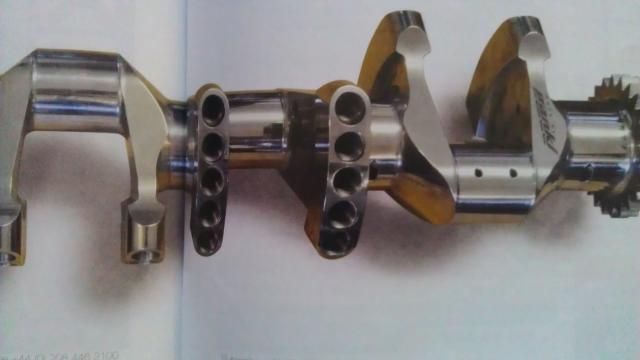

This is the Pankl crankshaft which is probably a F1 piece, notice no journal cheeks on the rod journals. Unnecessary weight at the most critical area in terms of centrifugal force which has been removed.

Last edited by slate blue; 01-10-2012 at 11:17 PM.
#42
Three Wheelin'
Thank you! That is very helpful.
I've been contemplating oiling for a 'special project'.
I did contemplate a passage going just under the surface like your example but the calculations I did indicated that the pressure required to overcome centrifugal force would still be great even though it's not 'pushing' as deep. That was for a very small main size and the passage would have been going nearly to the center anyway becasue of the proportions. The formula involves the difference of the squares of the depths so the benefit decreases with depth. With larger mains it makes more sense and is certainly better than any other conventional method.
BTW, I'd planned on EDMing a hole if doing the 'shallow main fed' method. If you think about how you would actually go about putting that hole there, it's an interesting project!
I've been contemplating oiling for a 'special project'.

I did contemplate a passage going just under the surface like your example but the calculations I did indicated that the pressure required to overcome centrifugal force would still be great even though it's not 'pushing' as deep. That was for a very small main size and the passage would have been going nearly to the center anyway becasue of the proportions. The formula involves the difference of the squares of the depths so the benefit decreases with depth. With larger mains it makes more sense and is certainly better than any other conventional method.
BTW, I'd planned on EDMing a hole if doing the 'shallow main fed' method. If you think about how you would actually go about putting that hole there, it's an interesting project!
#43
Addict
Rennlist Member
Rennlist Member
Thread Starter
Small update, earlier in this thread, I detailed how different grooving effects the performance of the engine with quite marked changes in the level of friction. This is due to load carrying capacities of the bearings in relation to the grooving. I also noted that the different main bearings carry different loads, so the bearings can be modified in terms of grooving to have greater load carrying capacities on mains that need it and more grooving on the ones that have less load. What I have been told is that the race teams may buy all plain main bearings and groove them how they see fit. So that means the mains are close if not all the way to optimal 140 degree grooving.


#44
Addict
Rennlist Member
Rennlist Member
Thread Starter
This is a crankshaft design I really like, I would change it to 8 cwt but I like the shape of the counterweights and I like the way the unnecessary weight has been removed/scalloped from the crankshaft's web.
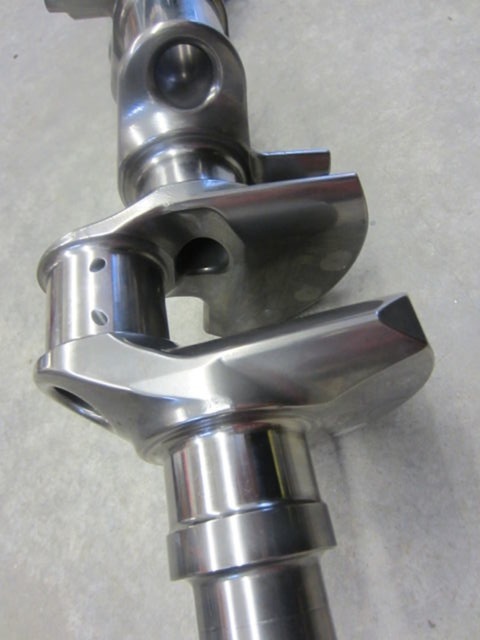
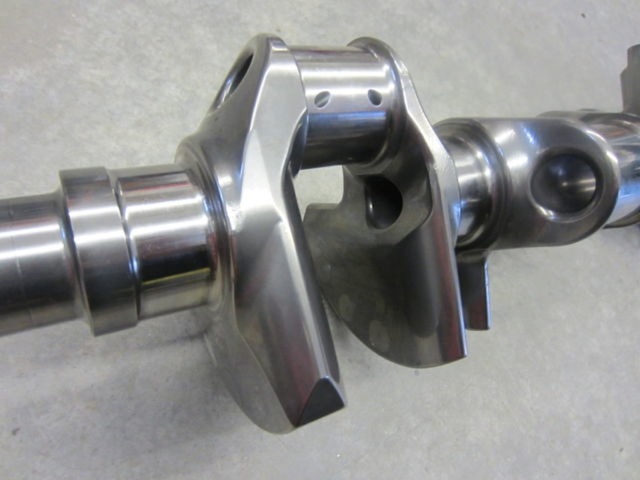
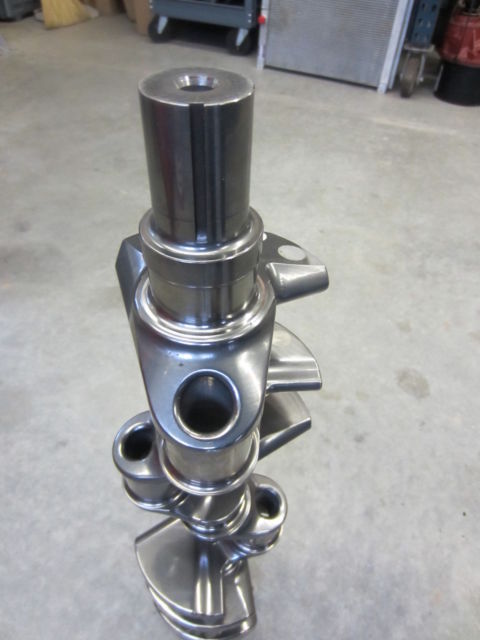
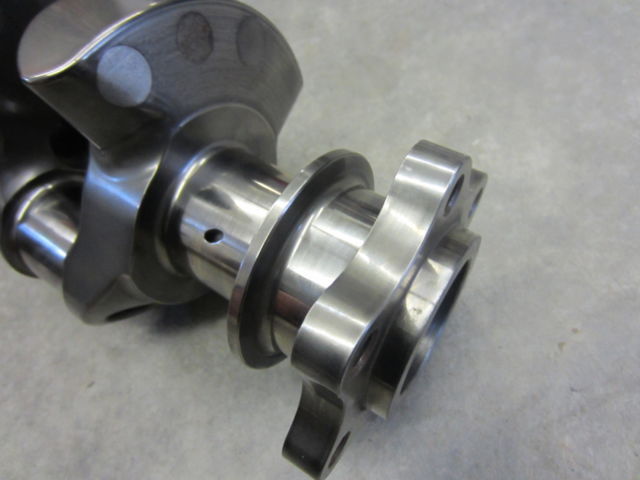
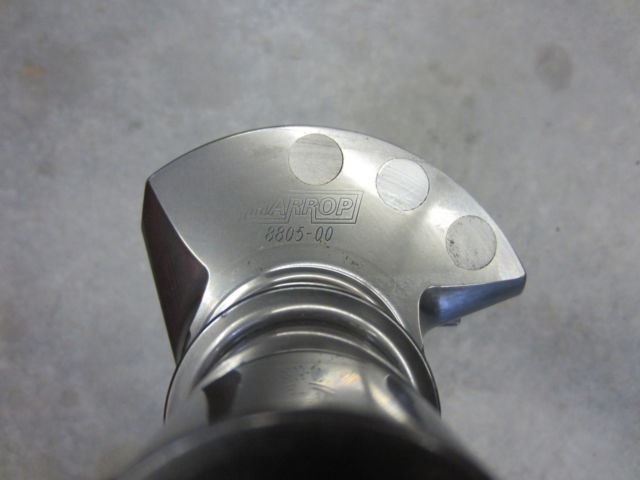
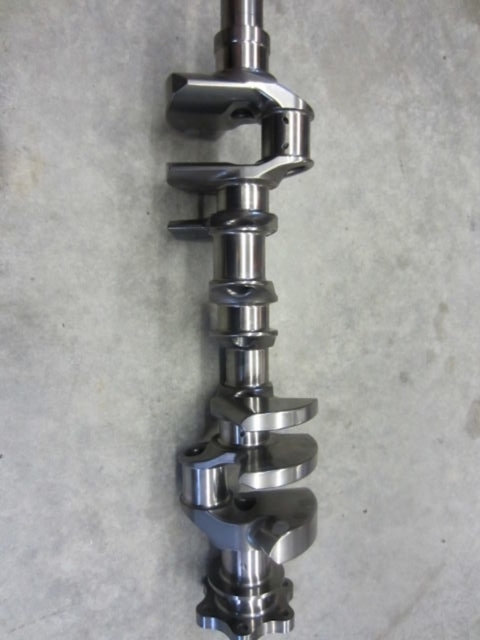
It is quite similar to the Bryant seen here.
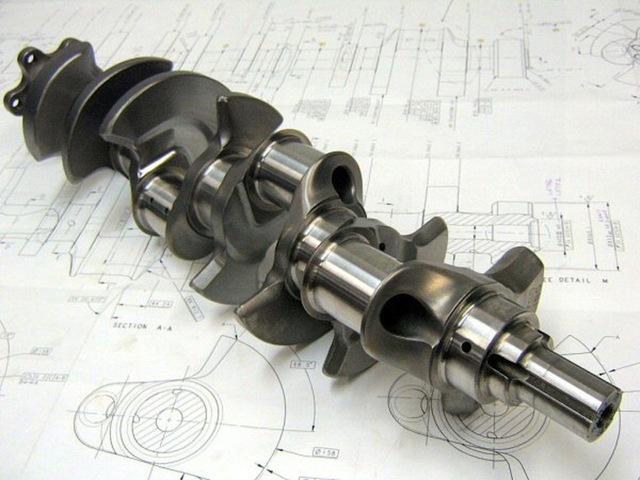
The Winberg below has nice lightening features around the rod journal also.
Given the fall in my currency I think a US made crank is now too pricey. A local crank maker is interested and makes his cranks from EN 26 which is a super clean version of that material. I was also looking at 300M but that is not readily available.
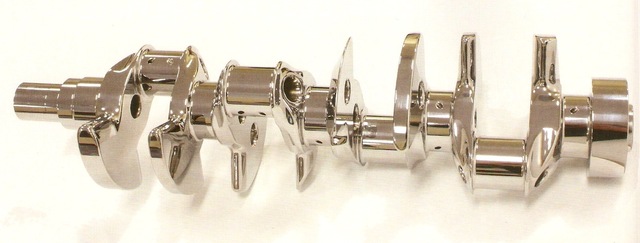
Going back to the original topic of the thread, one of the reasons for some delay of the crankshaft has been sleeving the block's main bearing tunnel down to a finished size of 68 mm. This allows the use of the latest tech in bearings and these are much harder bearing also.
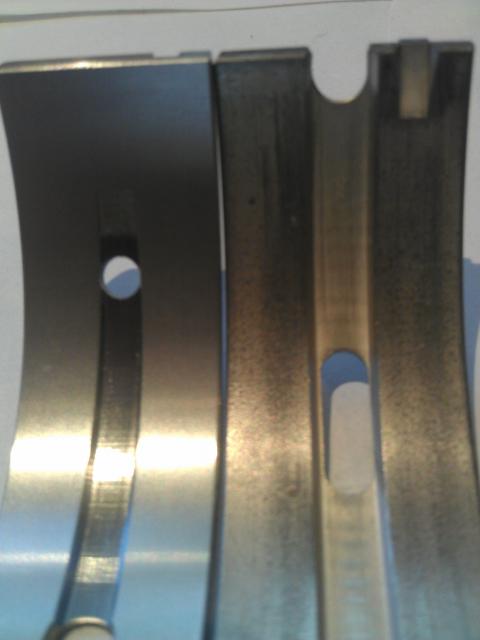
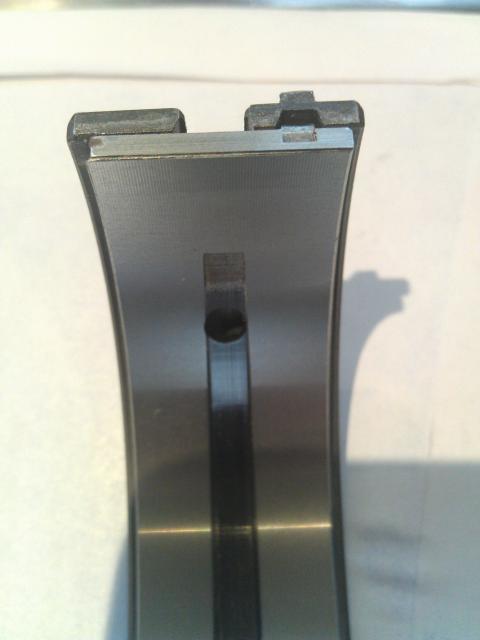
you can see some of the wear here as the shaft has climbed the bearing due to breaking of the oil film despite the 928 running a very thick oil by today's standards. The new bearing will have less friction and better load carrying capacity. The issue with the fitment is that the manufacturer doesn't supply the size of the tunnel that the bearing needs. So I have to work that one out myself and I haven't had the time or resources to do that just yet.
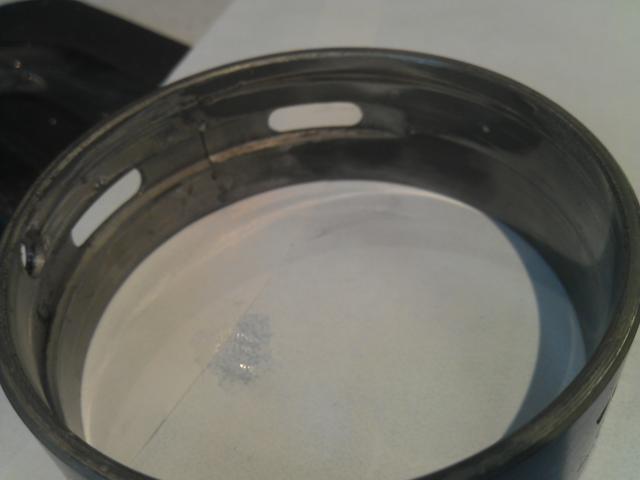
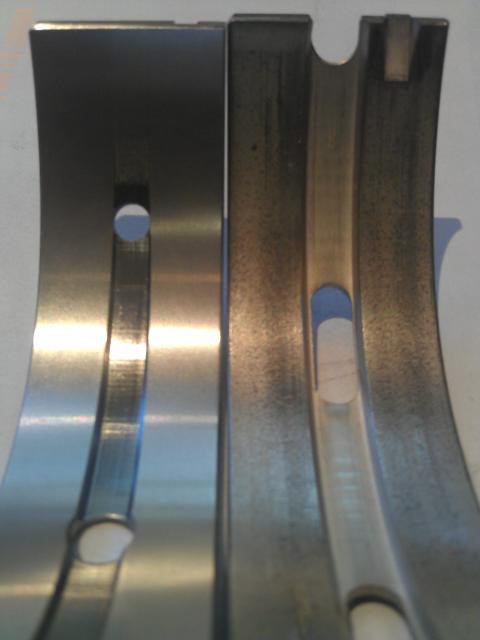






It is quite similar to the Bryant seen here.

The Winberg below has nice lightening features around the rod journal also.
Given the fall in my currency I think a US made crank is now too pricey. A local crank maker is interested and makes his cranks from EN 26 which is a super clean version of that material. I was also looking at 300M but that is not readily available.

Going back to the original topic of the thread, one of the reasons for some delay of the crankshaft has been sleeving the block's main bearing tunnel down to a finished size of 68 mm. This allows the use of the latest tech in bearings and these are much harder bearing also.


you can see some of the wear here as the shaft has climbed the bearing due to breaking of the oil film despite the 928 running a very thick oil by today's standards. The new bearing will have less friction and better load carrying capacity. The issue with the fitment is that the manufacturer doesn't supply the size of the tunnel that the bearing needs. So I have to work that one out myself and I haven't had the time or resources to do that just yet.


#45
Rennlist Member
They've done lots of one off race components for me, and every time they've been engineering masterpieces.

